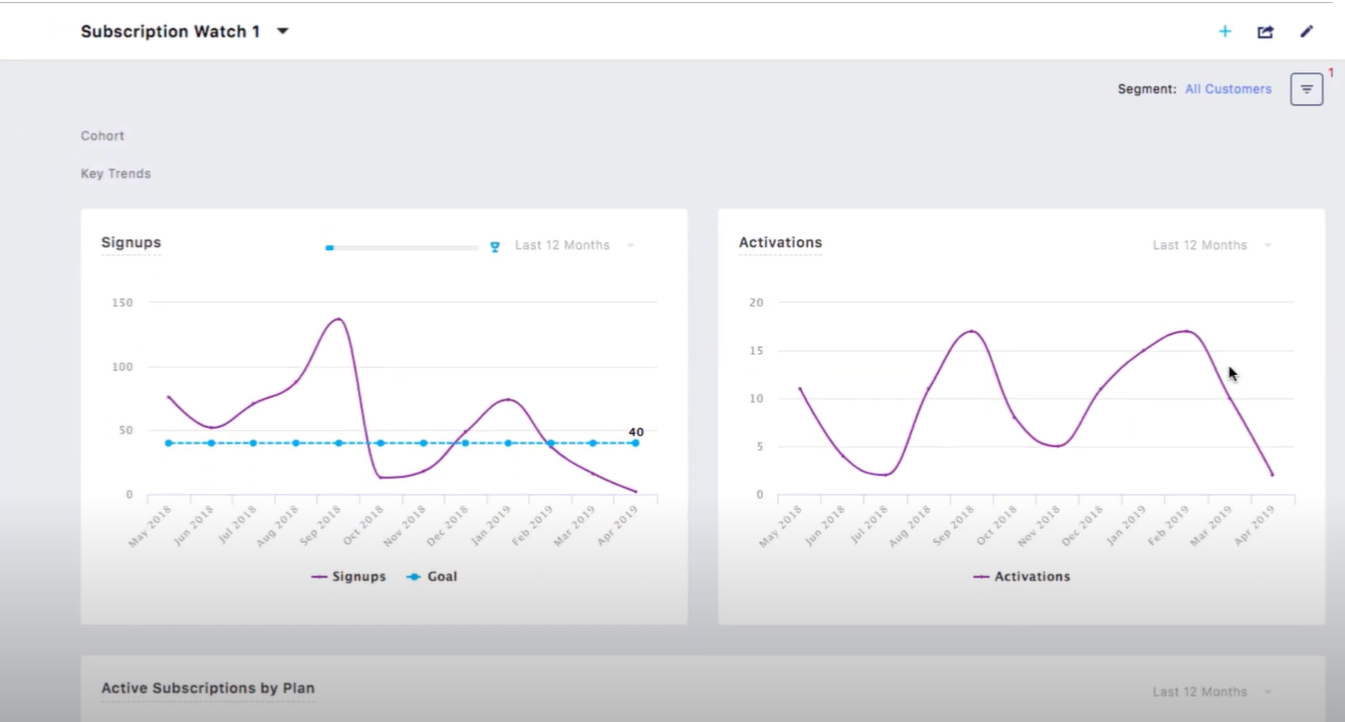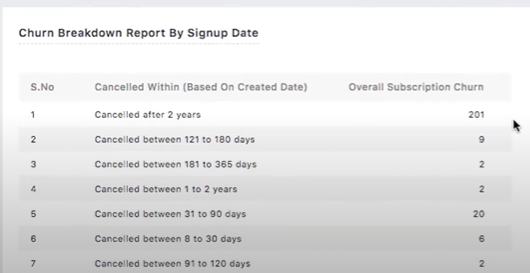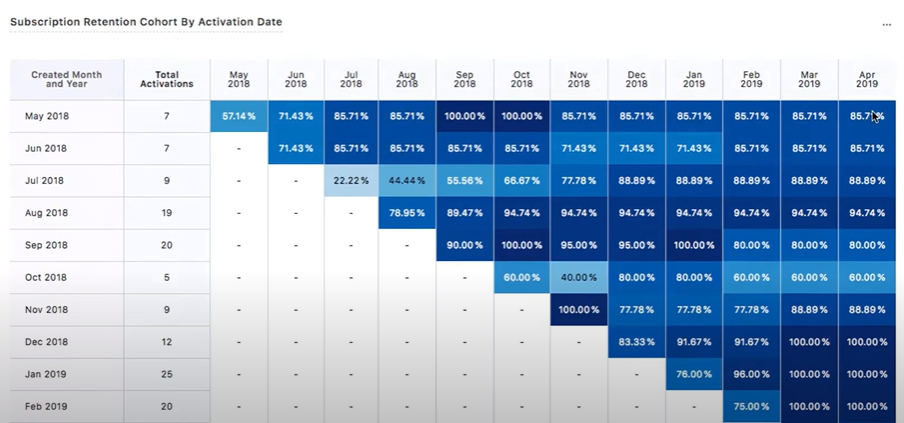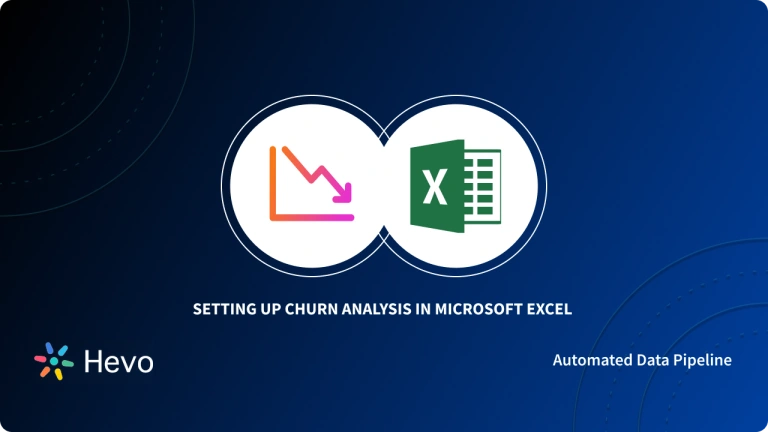Customer Churn is a metric that lets you gain insights into the Customer Attrition Rate for an organization. It is estimated that reducing Customer Churn by just 5% could lead to a significant increase in profits (25%-125%). Churn Analysis is carried out by the SaaS (Software as a Service) companies to understand the cause behind the Customer Churn and implement appropriate strategies to ensure Retention. Therefore predicting and preventing Customer Churn depicts an additional potential revenue source for any interested enterprise.
This blog talks about Churn Analysis in detail highlighting its importance, the process involved, steps to increase Retention, and the challenges faced while analyzing and predicting Churn.
A fully-managed No-code Data Pipeline platform like Hevo helps you integrate and load data from 150+ different sources to a destination of your choice in real-time in an effortless manner. Hevo with its minimal learning curve can be set up in just a few minutes allowing the users to load data without having to compromise performance.
Why Choose Hevo?
- Completely Automated: The Hevo platform can be set up in just a few minutes and requires minimal maintenance.
- Real-Time Data Transfer: Hevo provides real-time data migration, so you can have analysis-ready data always.
- 100% Complete & Accurate Data Transfer: Hevo’s robust infrastructure ensures reliable data transfer with zero data loss.
Hevo can help you scale your data infrastructure as required.
Get Started with Hevo for FreeTable of Contents
What is Churn Analysis?
Online businesses treat a customer as churned when a certain amount of time has passed since the customer’s last interaction with the website, service, or product. The total cost of Churn incurred consists of lost revenue and the total Marketing costs that go into replacing the old customers with new ones.
Churn Analysis takes precedence as it is always more challenging to acquire a new customer compared to retaining a current paying customer. Actionable insights essential for Churn Analysis can be obtained through the following:
- Identify Causes of Churn: This can help you improve the user experience and ensure that your customers keep coming back for more.
- Monitor Churn Numbers Regularly: Keep a track of the metrics in question, since anything that isn’t measured can’t be improved.
- Identify Points of Dropoff: Keep a lookout for where in their journey, your customers are dropping off from your website or service.
Here are two formulas to keep in mind while analyzing Customer Churn:
Understanding the Importance of Churn Analysis
Customer Churn is very expensive for any business or organization. A high Churn Rate requires a company to deal with the stress of doubling down to bring in new customers; just to stay afloat. Even a minuscule single-digit increase in the Churn Rate can seriously impede a company’s growth rate and what’s worse is that high Churn Rates are more likely to compound over time.
This makes Churn Analysis a fundamental step in addressing these pressing issues while there’s still time to keep the ship afloat. Through Churn Analysis you can:
- Expose Product Weaknesses: Churn Analysis plays a crucial role in revealing the patterns that indicate the common motivators for customers to part ways with your company. These could be anything from price productivity to poor product adoption. It is also instrumental in demonstrating the exact way customers engage with your product throughout their lifecycle. You can use this to maximize what your customers already love, and improve upon everything they don’t.
- Unearth Customer Opportunities: Customer experience improvement comes with a need to understand the customer requirements and expectations at every stage of their journey and moulding your product accordingly. Churn Analysis depicts trends in customer behaviour at every touchpoint. Personalized engagement preferred by your customers allows you to make your customers feel valued and appreciated.
When Should You Do Churn Analysis?
There is always an event that serves as the trigger that urges you to start analyzing churn. For example, you might see a sudden jump in your churn rate in a given month, or perhaps your churn has been on a gradual increase for the past 8-9 months.
These are indications of red flags, which means that you need to dig in a little deeper to find out what’s happening with your data. The trigger doesn’t necessarily have to be negative. For instance, you might have just rolled out a product onboarding email series for a couple of new customers a few weeks ago, and you wish to see if it had any impact on your churn rate. This also falls under the purview of Churn Analysis.
It is suggested that you should turn to Churn Analysis whenever you notice something out of the ordinary, irrespective of whether that is good or bad or if you can make a change that could potentially impact churn.
Optimize your business outcomes by implementing a churn prediction model to identify at-risk customers. Find out more here: Churn Prediction Model.
Understanding the Types of Churn
Churn Analysis can work wonders for a company trying to focus on keeping the business running during a crisis; trying to identify at-risk customers. Customers may end up cancelling for a number of reasons and in multiple ways. For every type of Churn, you would need to come up with a different action plan to effectively deal with it. Here are the different types of Churn:
1) Involuntary Passive Churn
This type of Churn represents a leak in your revenue stream. This can occur when the customer’s payment is not completed for reasons such as:
- Card declined by banks.
- Soft declines due to a credit card getting maxed out.
- Hard declines due to a card being reported stolen or lost.
- Using an expired card.
This Churn is easier to deal with compared to the others on the list by implementing dunning workflows.
2) Voluntary Active Churn
This Churn comes through customers cancelling your service or product. It could be due to poor customer service, poor onboarding, or switching over to a competitor. This type of Churn is a major portion of your lost revenue, so most of your Retention strategies should be focused on trying to prevent Voluntary Active Churn.
3) Downgrade Churn
This Churn occurs when a customer picks a lower-tier plan which leads to something called Downgrade MRR. This could happen for the following reasons:
- Misalignment of value propositions.
- Price sensitivity.
This can be reduced by working on your pricing and packaging. Also, you can look at ways to make your customer’s current plan more lucrative with offers and such to prevent a downgrade.
3) Good Churn
In some cases, Customer Churn filters out the customers that were a bad match for your service or product. This can also refer to the customers that leave after their short-term need with your product is fulfilled like a short-term project or event. A simple way of keeping track of ‘good’ Churn is keeping track of Reactivation MRR since these customers tend to reactivate their subscriptions later.
Understanding the Process of Churn Analysis
Similar to any form of analysis, you need to keep track of the right metrics to effectively analyze the causes behind Customer Churn Rate and work proactively to reduce it and increase your Retention Rate in the process. Here are a few KPIs (Key Performance Indicators) to include in your Churn Analysis pipeline:
- Customer Engagement and Usage: A declining rate of usage is one of the first red flags indicating impending Customer Churn. Depending on how long your customer had been using your product before your customer usage started dropping, this metric can suggest different things accordingly.
- Competitor Pricing Points: You need to keep an eye on the pricing offered by your competitors along with the deals that they are offering. This is important as it helps anticipate the likelihood of your customers churning to your competitors. To thrive and stay competitive in your niche, you need to subject your pricing plans to continuous re-evaluations.
- Support Tickets: If your customer support team is receiving fewer tickets than normal it can mean two things. One, you are doing everything perfectly. The second one, which is more likely, is a sign of the customer’s lack of engagement. This means that the customers no longer feel it’s worth their time to seek support to fix their problems with your service.
- Likelihood to Upgrade: A good idea would be to maintain a KPI that allows you to hit back against Customer Churn in a preemptive fashion. One way to do this is by securing customers through Upsells. Target the areas in your product lifecycle where your Upsells may be more effective. Also, target the demographic of customers that tend to upgrade their subscriptions more than others.
The easy way to perform Churn Analysis would be to function within a framework instead of hoping you get lucky with actionable insights the moment you jump headfirst into the voluminous data ahead of you. Here are 3 steps you can follow on your Churn Analysis journey:
- Step 1: Leveraging Subscription Analytics
- Step 2: Customer Segmentation Analysis
- Step 3: Determining the Reasons Behind Churn
Step 1: Leveraging Subscription Analytics
Subscription Analytics tools allow you to keep track of all metrics at a single glance. Now that you have all your data and metrics in a single place, you can modify the data to extract meaningful actionable insights as you see fit.

You can create alerts on your Churn Analysis Dashboard to notify you about any adverse changes in real-time. This is a great way to stay updated with your Churn metrics.
Step 2: Customer Segmentation Analysis
Customer Segmentation is defined as the process of grouping your customers exhibiting similar traits. This can help you discover important trends in Customer Churn. Pick a tool that allows you to analyze Customer Churn in segments; that can be configured based on various relevant metrics. These metrics could be Revenue, Business Type, or Demographics.
- Business Sector-Based Churn Analysis: This segmentation method deploys specific measures for each industry to prevent Customer Churn. The following measures can be put to use to reduce Customer Churn in industries facing an economic slowdown.
- Demographics-Based Churn Analysis: The customer’s whereabouts adds considerable context when you are trying to understand why a customer might be churning. Your product adoption may be affected by tax regulations, payment gateways, and different payment processing methods across different countries. One reason why your customers might be parting ways with your company is a lack of payment options or a lack of compliance with regulations. This segmentation method, therefore, is a great way to identify such trends.
- Revenue-Based Churn Analysis: This segmentation method divides customers into groups based on their revenue. For instance, if you consider early-stage startups, one of the main reasons behind Customer Churn could be budgetary issues which can be reduced by offering them discounts and flexibility in payment terms. For well-established companies, product scaling needs to be ensured that is aligned with the company’s growth.
Step 3: Determining the Reasons Behind Churn
You can deploy strategies to curb Customer Churn only after you’ve understood the reasons causing it in the first place. Two types of Churn are taken into account for this purpose:
- Early vs Late Stage Churn: Timing of the Churn adds an extra layer to your Churn Analysis. You can either look at it through activation dates or MRR Retention Cohorts. The MRR Retention Cohort provides visualizations of MRR addition, growth, and Churn behaviour. This is based on when you acquired the customer and what transpired during a particular month.
- Involuntary vs Voluntary Churn: Understanding the percentage of Churn that is voluntary and the percentage that is involuntary provides valuable insights into setting up effective Churn prevention strategies and workflows. Here are a few helpful illustrations to drive the point home.


As depicted in the figure above, customers acquired in recent months seem to have churned more than the older ones which are indicative of a high early-stage Churn.
Reducing Customer Churn through Targeted Proactive Retention
To succeed at retaining the customers who would have otherwise abandoned your business, Retention experts and Marketers should be able to:
- Predict in advance which customers are going to Churn through Churn Analysis.
- Have an understanding of the Marketing actions that will have the greatest Retention impact on each customer.
This allows a large proportion of the Customer Churn to be eliminated. While this may sound simple in theory, achieving this goal is extremely challenging.
Modelling techniques for Churn prediction try to understand the exact customer behaviours and attributes that indicate the risk of Customer Churn. To have a fairly high success rate for your targeted proactive Retention efforts, you need to employ a technique that is highly accurate.
Say suppose a Marketer has no idea about a customer that’s about to Churn, no action will be taken for that customer. Also if unknowingly Retention-focused strategies are offered to happy, active customers it may lead to reduced revenues. This can make targeted proactive Retention work cut out for you due to its counterproductive nature.
Conclusion
This blog talks about what Customer Churn is, and how Customer Churn Analysis is carried out. It also highlights several of the finer points regarding this topic like the importance of Churn Analysis, the process involved, methods to reduce Customer Churn, and the challenges one faces while carrying out Churn Analysis.
For a comprehensive guide on related techniques that can be utilized for analyzing your data, click on the jump links for Marketing Funnel Analysis and Cohort Analysis.
Extracting complex data from a diverse set of data sources can be a challenging task and this is where Hevo saves the day!
Hevo offers a faster way to move data from 150+ sources such as Databases or SaaS applications into your Data Warehouse to be visualized in a BI tool. Hevo is fully automated and hence does not require you to code.
You can try Hevo’s 14-day free trial. You can also have a look at the unbeatable pricing that will help you choose the right plan for your business needs!
FAQs
1. What is an example of churn analysis?
Churn analysis identifies customers likely to leave a service. For instance, a subscription service may track user engagement, time since last login, and support requests to predict which users might cancel their subscriptions.
2. How do you calculate churn analysis?
To calculate churn, divide the number of customers lost in a period by the total number of customers at the start of the period, then multiply by 100 for the churn rate percentage.
3. What is the KPI for churn analysis?
Key KPIs for churn analysis include Churn Rate, Customer Lifetime Value (CLV), and Retention Rate. These metrics help evaluate customer loyalty and the effectiveness of retention efforts.


